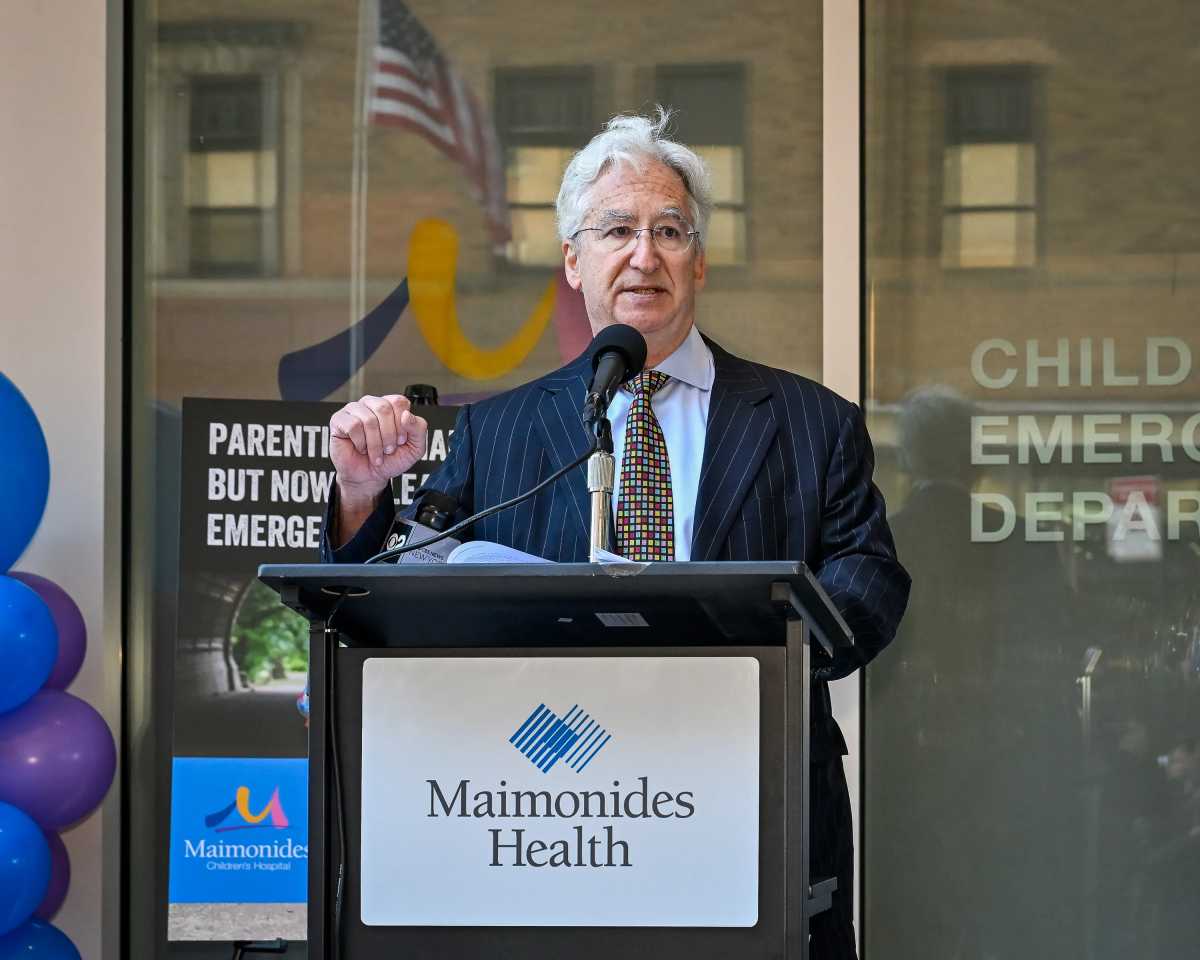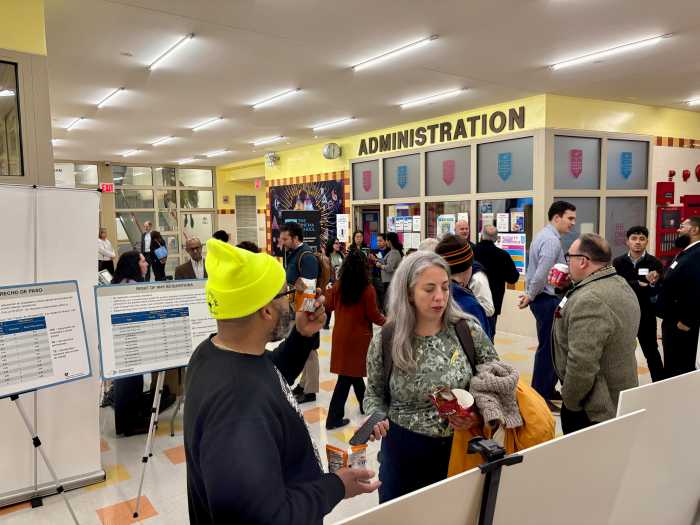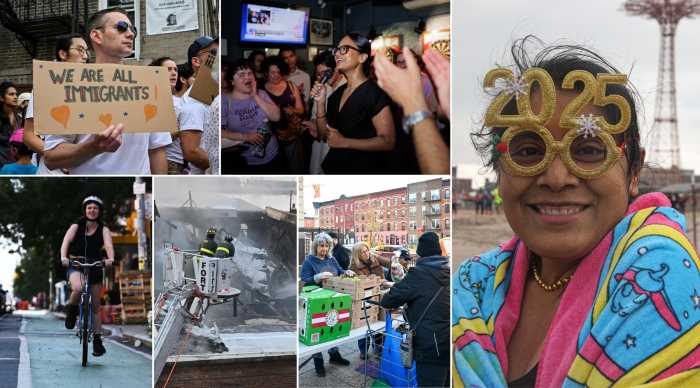Lawyers for a public interest group announced on Thursday that a number of NYC bus stops now have warning strips designed to help visually impaired passengers board more safely.
The NYC Department of Transportation (DOT) installed detectable warning strips—high-visibility white-edge markings with raised tactile domes— at 17 different bus-loading platforms in Manhattan, Bronx and Brooklyn. The devices aim to improve accessibility for visually impaired New Yorkers.
The move follows a years-long discussion between the DOT and New York Lawyers for the Public Interest (NYLPI) to improve the platforms for commuters.
The platforms were originally made to be visually accessible. They allow a bus to pull up smoothly to a stop without extra maneuvering. However, lawyers at the NYLPI explained that their design posed significant challenges during the boarding process for individuals with vision impairments.
So, warning strips were added to the platforms to help prevent people from potentially falling into the street.
“With the boarding edge on either side of the platform, we thought that was important for folks as they are gathering at the stop,” said Christopher Schuyler, managing attorney with the disability justice program at NYLPI. “Wherever there is a risk that they need to know that they are about to step off of the platform to hopefully prevent a dangerous fall into the street.”
DOT officials said they retrofitted the warning strips in 2023. NYLPI completed an inspection last year, he noted.
DOT ‘responded to the call’ for accessible bus-loading platforms
Schuyler added that he is pleased that DOT “responded to the call to make bus-loading platforms more accessible” for disabled New Yorkers, but said that the feature should have been included when the platforms were installed six years ago.
“These bus-loading platforms are an innovative product designed to speed up buses and ease the flow of traffic in New York City,” he said. “However, it’s crucial that designers make products with people with disabilities in mind at the outset.”

The bus-loading platforms are constructed of durable recycled plastic and are sometimes also referred to as “bus boarders” or “bus bulbs.” They were intended to hasten the loading and unloading process for all bus customers, but lawyers explained that they inadvertently created new obstacles for the disability community.
A blind bus rider alerted NYLPI of the issue in 2020, and the organization began advocating and talking with the DOT about installing necessary safety improvements to the platforms.
Only a “small handful” of bus stops have the platforms
Jack Nierenberg, vice president of Passengers United, which advocates for transit riders and disabled commuters in NYC, said the move is a “step in the right direction,” but more needs to be done to improve accessibility in public transportation.
“It only includes the bus loading platforms, and we only see that at a small handful of bus stops,” he said.
Nierenberg also stressed the importance of embedding accessibility into the design of the transit system.
“So, making sure that when the transit system is improved, upgraded, or even new portions are built or changed, whatever it is, that accessibility is not just considered an afterthought,” he said.






































